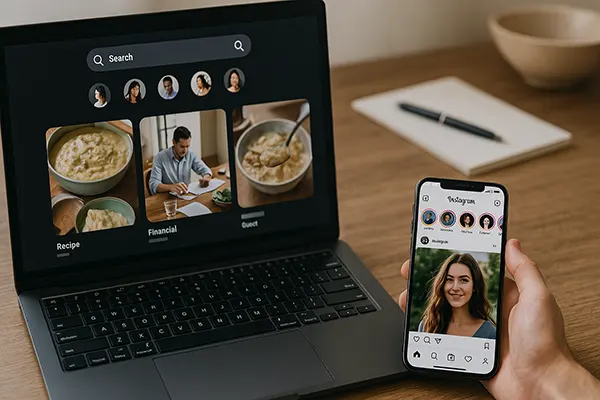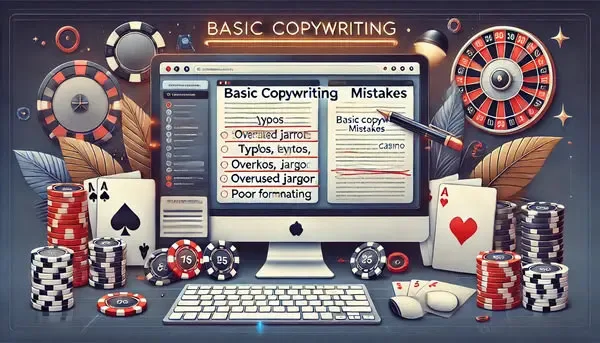
The Rise of Social Search in Copywriting: How TikTok and Instagram Are Challenging Google in 2025
In 2025, the digital landscape is experiencing a major transformation. Traditional search engines like Google are no longer the default entry point for content discovery. Instead, platforms such as TikTok and Instagram are rapidly redefining how users seek and consume information. This shift has profound implications for copywriting, especially for brands, content creators, and marketers who must adapt to a new algorithmic logic driven by engagement, authenticity, and visual storytelling.
The Shift from Traditional Search to Social Search
The behaviour of digital users has evolved significantly. Instead of typing queries into Google, many users—especially Gen Z and younger millennials—now go straight to social platforms to find answers, recommendations, and tutorials. TikTok, with its short-form video content and powerful search capabilities, has become a go-to source for everything from cooking recipes to financial tips. Instagram, too, with its Explore page and keyword-based Reels search, offers a visually engaging alternative to the text-heavy results of search engines.
This shift is not just anecdotal—it is backed by usage data. A 2024 Pew Research report revealed that nearly 40% of young internet users prefer searching for lifestyle-related content on social media rather than on Google. This is forcing companies to rethink SEO strategies and explore new ways of crafting copy that ranks not only on Google, but also on trending hashtags and algorithm-driven feeds.
For copywriters, this means transitioning from keyword-stuffed blog posts to concise, compelling captions, scriptwriting for short videos, and emotionally resonant messaging that fits within seconds of attention span. The structure, tone, and purpose of writing must evolve to match the visual and interactive nature of these platforms.
Impact on Content Discovery and Brand Presence
The growing influence of social search is redefining brand visibility. On platforms like TikTok, the virality of a video is not necessarily linked to follower count but to the relevance of the content in real time. Hashtag-based discoverability, engagement metrics, and the use of native platform tools such as TikTok SEO or Instagram’s keyword suggestions play a crucial role in content visibility.
Brands that want to stay relevant must adapt their copywriting style to align with social-first algorithms. This includes prioritising value-driven storytelling, using platform-specific language, and being quick to respond to emerging trends. Copywriters must also be skilled in scripting for voiceovers, optimising captions, and crafting on-screen text that complements visuals without overwhelming the viewer.
Moreover, user-generated content (UGC) is now one of the most powerful tools for visibility. Encouraging customers to share experiences and interact with branded content has proven to be more effective than traditional ads. Copywriting in this domain focuses on engagement, relatability, and community-driven language.
New Rules for Copywriting in the Social Era
In 2025, writing for social platforms demands a blend of creativity, analytics, and platform expertise. While Google’s search results favour long-form, structured content, TikTok and Instagram reward immediate value, emotional appeal, and clear call-to-actions. Writing needs to be agile—what works today may be irrelevant tomorrow.
The tone of copy has also shifted. It must sound authentic, relatable, and human. Overly polished or corporate-sounding messages are likely to be ignored. Instead, first-person narratives, informal language, and direct audience engagement are the norms. This requires a change in the writer’s mindset—from instructional to conversational, from broad to niche.
Another essential skill for copywriters is data literacy. Social platforms provide rich analytics on reach, engagement, and viewer behaviour. Successful copywriting strategies are built on interpreting this data to refine content. Experimentation, A/B testing of formats, and adapting copy based on performance are now standard practice.
How Creators and Brands Are Adapting
Leading creators have built entire brands by mastering platform-native storytelling. Their scripts often follow formats proven to keep viewers hooked—question hooks, surprising statements, or visual cues that reinforce the message. Brands are increasingly collaborating with these creators not just for reach but for the storytelling style that works on social search.
Some companies now have dedicated social copywriting teams whose sole task is to produce Reels, TikToks, and Stories that appear in algorithmic recommendations. This shows a shift from centralised SEO departments to agile creative units embedded within marketing teams. Flexibility, speed, and trend-awareness are essential traits of this new copywriting environment.
Importantly, brands that succeed in this space are those that respect the culture of each platform. Repurposing TV ads or blog-style captions into social platforms often leads to underperformance. Instead, native content wins—both in terms of copy and overall creative strategy.

The Future of Search and Copywriting Beyond 2025
As we move beyond 2025, social search is expected to gain even more ground. Platforms are already investing in AI-driven personalisation engines to surface the most relevant content for users. TikTok’s search results are becoming increasingly refined, while Instagram continues to enhance its Reels search and shopping integrations.
This development poses a strategic challenge for Google. Although Google has attempted to integrate short-form video content into its results, it struggles to match the native experience of social platforms. Copywriting will thus continue to bifurcate—one stream optimised for traditional search, the other tailored to dynamic social platforms.
The convergence of entertainment and information is becoming the new standard. To remain competitive, copywriters must think like creators, blend marketing with storytelling, and continuously learn from platform shifts. The ability to write not just “for Google” but “for people where they are” is now a core competency for digital professionals.
Key Takeaways for Copywriters in 2025
The landscape of content creation has shifted—social media is no longer just a promotional channel, but a discovery engine. Copywriters must reframe their approach to match this evolution. Instead of writing *for* platforms, they must write *within* platforms, respecting the unique norms of each space.
Success in 2025 means being platform-fluid: knowing the differences between TikTok and Instagram copy, understanding the psychology of swiping, and being able to hook an audience in three seconds or less. Empathy, speed, and adaptability are the new currencies of value.
Ultimately, the rise of social search does not signal the end of traditional copywriting, but rather a renaissance. It challenges writers to innovate, embrace multimedia thinking, and prioritise real connection over ranking. It’s not just about being seen—it’s about being worth watching.




